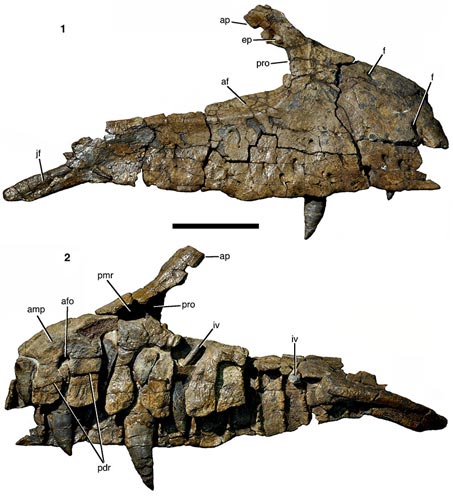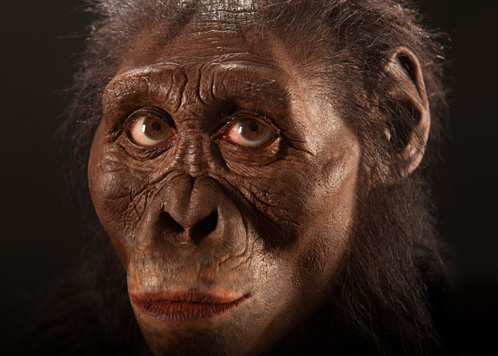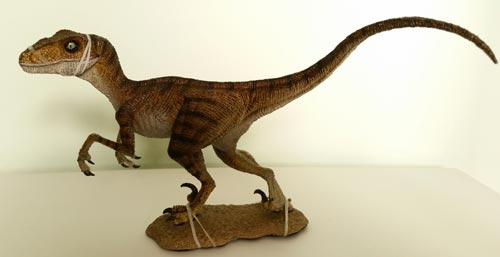Wiehenvenator albati – “The Monster of Minden”
The “Monster of Minden” – Wiehenvenator albati
A new species of large, Middle Jurassic carnivorous dinosaur has been described. Writing in the academic journal “Palaeontologica Electronica” the researchers, which include Dr Oliver Rauhut, (conservator at the Bavarian Collection for Palaeontology and Geology), identify this new theropod as a member of the Megalosauroidea. Named Wiehenvenator albati, it could be a potential sister taxon to Torvosaurus and a dinosaur that might have been about the same size as Torvosaurus gurneyi, reaching an estimated length of around ten metres.
An Illustration of the Newly Described Middle Jurassic Theropod from Germany
Picture credit: Palaeontologica Electronica (based on an illustration of Torvosaurus by Scott Hartman
The picture above shows the known fossil bones of Wiehenvenator.
Wiehenvenator albati – A German Dinosaur
Fragmentary fossils including elements from the skull and jaws, caudal vertebrae, ribs and bones from the lower legs and ankle were excavated from a disused quarry located in Northrhine-Westphalia (Germany) back in 1999. The fossils were found by chance, it was a routine inspection, however, once the first bones had been discovered a field team was brought in to ensure all the fossil material present could be collected.
The strata in which the fossil material was found are Middle Callovian in age (around 163 to 165 million years old) and they represent marine sediments. During this time, much of the land that was to form western Europe lay under a warm, shallow tropical sea. A number of small islands existed and it seems that this archipelago was home to this hunter, a dinosaur that is estimated to have weighed more than two tonnes.
Skull and Elements of the Jaws in their Anatomical Position
Picture credit: Palaeontologica Electronica
“The Monster of Minden” – Wiehenvenator albati
Nicknamed “The Monster of Minden”, due to the town’s close proximity to the fossil dig site, Wiehenvenator was probably the apex predator on the island archipelago. The teeth associated with this dinosaur are strongly recurved with the root making up more than two thirds of the tooth length. The largest teeth identified so far (from the maxilla), measure in excess of 13 centimetres long.
The Teeth of Wiehenvenator albati (Various Views)
Picture credit: Palaeontologica Electronica
Fossil Teeth
The picture above shows various views of the fossil teeth associated with the jawbones or found as loose items at the dig site. The scale bar for 1 and 2 is 1 centimetre, the scale bar in the other images represents 5 centimetres (except picture 9). The dinosaur was named Wiehenvenator for the Wiehengebirge, a chain of hills south of the town of Minden, where the holotype specimen was found and venator, Latin for hunter. The trivial name honours Friedrich Albat, who found the holotype specimen.
Commenting on the significance of the discovery, Dr Rauhut stated:
“Apparently there was in these islands a wide range of sometimes very large predators mainly from the group of Megalosauroidea as finds from France and England, as well as the new predators from Germany show. The Megalosauroidea were the first giant predatory dinosaurs of Earth’s history.”
Differences in the Middle and Late Jurassic Theropod Fossil Records
The discovery of Wiehenvenator adds to the number of large theropods known from the Callovian faunal stage of the Jurassic. The research team comments on the number of large theropods from the Middle Jurassic that are classified as megalosauroids and they suggest that a rapid radiation of megalosaurs is suggested between the Toarcian and the Bathonian faunal stage of the Jurassic (approximately 183 to 166 million years ago).
The scientists postulate that this radiation and increase in the number of megalosaurs was probably triggered by the Pliensbachian-Toarcian extinction event that took place around 183 million years ago.
They comment that this extinction event may have been more significant for theropod evolution than the larger end Triassic mass extinction. The team then go on to review the changes in theropod genera that took place from the Middle Jurassic onwards.
Two Views of the Right Maxilla (Upper Jaw Bone) of Wiehenvenator
Picture credit: Palaeontologica Electronica
The picture above shows two views of the right maxilla of Wiehenvenator albati, top (1) lateral view and bottom (2) medial view.
Less Megalosaurs More Allosaurs
The fossil record indicates a faunal turnover from Megalosauroidea dominated Middle Jurassic to allosauroid/coelurosaur dominated Late Jurassic theropod faunas. The researchers plotted the number of different theropod fossils found globally between the Middle Jurassic to the Late Jurassic. Although the paucity of the fossil record makes a complete analysis impossible, the team did infer that there was a change in the proportion of different types of theropod dinosaur represented as the Jurassic progressed.
The once dominant megalosaurs were replaced by coelurosaurs and allosaurs.
For models and replicas of a variety of theropod dinosaurs: PNSO Age of Dinosaurs Models.
Middle Jurassic Theropods Compared to Late Jurassic Theropods (Assessed by Clade)
Picture credit: Palaeontologica Electronica
The Impact on Large Taxa (Apex Predators)
Picture credit: Palaeontologica Electronica
Allosaurs Replacing Megalosaurs – Theropod Faunal Turnover
When body mass is considered and theropod dinosaurs estimated to be less than 250 kilogrammes in weight are removed, the impact of the rise in the number of coelurosaurs is lost, suggesting that these dinosaurs did not rise to the apex predator niche during this period. Large megalosaurids which dominated the apex predator niche globally during the Middle Jurassic had been substantially replaced by allosaurids by the end of the Jurassic.
The scientists are quick to point out that these figures are not conclusive, bias because of the large number of theropods from the Upper Jurassic Morrison Formation is discussed along with the difficulties of undertaking analysis of this sort due to the relatively poor fossil record of large meat-eating dinosaurs over the time period studied.
However, an analysis of environmental preferences of allosauroids and megalosauroids indicates that the former preferred inland environments, whereas the latter are more common in nearshore environments.
From this it could be inferred that megalosaurids preferred to “be beside the seaside”.
The publication: “A new theropod dinosaur megalosaurid from the late Middle Jurassic (Callovian) of north-western Germany: Implications for theropod evolution and faunal turnover in the Jurassic. By: Oliver WM Rauhut, Tom Huebner, and Klaus-Peter Lanser. In: Palaeontologia Electronica 2016.
Visit Everything Dinosaur’s website: Visit Everything Dinosaur.




























